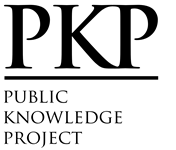Aktivitas antibakteri dari ekstrak getah mangrove Excoecaria agallocha pada pelarut kloroform terhadap Escherichia coli dan Staphylococcus aureus
Abstract
Ekstrak mangrove dari jenis Excoecaria agallocha telah diketahui memiliki berbagai manfaat, seperti yang berasal dari daun, akar, kulit batang dan tidak terkecuali pada getah. Getah ini telah dimanfaatkan untuk meracuni ikan, dan dapat membutakan mata apabila getah masuk kedalam mata walaupun sifatnya sementara. Penelitian ini dilakukan untuk menganalisa adanya aktivitas antibakteri ekstrak getah mangrove E. agallocha menggunakan pelarut kloroform terhadap bakteri Escherichia coli dan Staphylococcus aureus. Tahapan dalam penelitian ini meliputi ekstraksi dan uji aktivitas antibakteri. Penelitian ini menggunakan lima perlakuan meliputi kontrol dan ekstrak kloroform dengan konsentrasi 1 µg/disk, 5 µg/disk, 10 µg/disk dan 50 µg/disk. Hasil penelitian menunjukkan bahwa ekstrak getah mangrove E. agallocha menggunakan pelarut kloroform dapat menghambat pertumbuhan bakteri E. coli dan S. aureus dengan diameter zona hambat yang dihasilkan sebesar (9,67 ± 0,32) mm terhadap E. coli dan (11,07± 0,25) mm terhadap S.aureus.
The extract of various plant parts of the mangrove Excoecaria agallocha has been proved as a potential source, for example the extract of leaves, root, bark and also sap. The sap is used for fish poison and temporary blindness if it gets into the eyes. This research for analyse antibacterial activity of extract sap of mangrove E. agallocha with kloroform solvent againts Escherichia coli and Staphylococcus aureus. This research include extraction and antibacterial activity test. This experiment use one control and four different concentration of chloroform extract (1 µg/disc, 5 µg/disc, 10 µg/disc dan 50µg/disc). The result showed that the sap extract of mangrove E. agallocha with chloroform solvent has antibacterial activity to inhibit E. coli dan S. aureus growth with minimum inhibitory concentration (9,67 ± 0,32 ) mm to E. coli dan (11,07± 0,25) mm to S.aureus.
Keywords
Full Text:
PDFReferences
Agoramoorthy, G., M. Chandrasekaran, V. Venkatesalu and M.J. Hsu, 2007. Antibacterial and Antifungal Activities of Fatty Acid Methyl Esters of the Blind-your-eye Mangrove from India. Brazillian Journal of Microbiology. 38:739-742.
Choudhury, S., A. Sree, S.C. Mukherjee, P. Pattnaik and M. Bapuji, 2005. In Vitro, Antibacterial Activity of Extracts of Selected Marine Algae and Mangroves against Fish Pathogens. Asian Fisheries Science 18 (2005): 285-294.
Dhayanithi N M, T T A Kumar & T Balasubramanian, 2012. Effect of Excoecaria agallocha Leaves Againt Aeromonas hydrophila in Marine Ornamental Fish, Amphiprion sebae. Indian J. Mar.Sci. Vol. 41 (1): 76-82.
Dwidjoseputro, D. 1987. Dasar-Dasar Mikrobiologi. Penerbit Djambatan. Jakarta. hlm. 104-144.
Erickson, K.L., J.A. Beutler., J.H. Cardellina., J.B. McMahon., D.J. Newman and M.R. Boyd, 1995. A Novel Phorbol Ester from Excoecaria agallocha. Jounal of Natural Products. 58 (5): 769-772.
Jawetz, E., J.L. Melnick dan E.A. Adelberg, 1986. Mikrobiologi untuk Profesi Kesehatan, Ed. 16. Penerbit Buku kedokteran. Jakarta. hlm. 288-310.
Lay, B.W., 1994. Analisis Mikroba di Laboratorium. PT. Rajagrafindo Persada. Jakarta. 168 hlm.
Miles, D.H., U. Kokpol, V. Chittawong, Santi Tip-Pyang, Kwanjai Tunsuwan and Chi Nguyen, 1999. Mangrove Forests— the Importance of Conservation as a Bioresource for Ecosystem Diversity and Utilization as a Source of Chemical Constituents with Potential Medicinal and Agricultural Value. IUPAC: 1-9.
Mishra, P.M. and A. Sree, 2007. Antibacterial Activity and GCMS Analysis of the Extract of Leaves of Finlaysonia obovata (A Mangrove Plant). Asian J. Plant Sci., 6(1): 168-172 (2007).
Pambayun, R., M. Gardjito, S. Sudarmadji dan K.R. Kuswanto, 2007. Kandungan Fenol dan Sifat Antibakteri dari Berbagai Jenis Ekstrak Produk Gambir (Uncaria gambir Roxb). Majalah Farmasi Indonesia, 18(3).
Patra, J.K., T. K. Panigrahi, S. K. Rath, N. K. Dhal & H. Thatoi, 2009. Phytochemical Screening and Antimicrobial Assessment of Leaf Extracts of ExcoecariaAgallocha L.: A Mangal Species of Bhitarkanika, Orissa, India, Adv. in Nat. Appl. Sci., 3(2): 241-246.
Pavia, D.L., Lampman, G.M., Kriz, G.S. and Engel, R.G., 1995. Introductions to Organic Laboratory Techniques: A Contemporary Approach, W.B. Saunders College Publishing. Philadelphia. p 646-662.
Pradeepa, P., K. Subalakshmi., A. Saranya. P. Dinesh., V. A. Raj and T. Ramanathan, 2015. Milky Mangrove Excoecaria agallocha L. Plant as a Source for Potential Mosquito Larvicides. Journal of Applied Pharmaceutical Science. Vol. 5 (03): 102-105.
Radji, M., A. Sumiati dan N. Indani, 2004. Uji Mutagenisitas dan Anti Kanker Ekstrak Aseton dan n-heksana dari Kulit Batang Sesoot (Garcinia picrorrhiza Miq.). Majalah Ilmu Kefarmasian. 1 (2): 69 – 78.
Ren-Bo An, Hyun-Chul Kim, Sung-Hee Lee, Gil-Saeng Jeong, Dong-Hwan Sohn, Hyun Park, Dong-Yeul Kwon, John Hwa Lee and Youn-Chul Kim, 2006. A New Monoterpene Glycoside and Antibacterial Monoterpene Glycosides from Paeonia suffruticosa. Arch Pharm Res. 29 (10): 815-820.
Rusila, N., Y.M. Khazali dan I.N.N. Suryadiputra, 1999. Panduan Pengenalan Mangrove di Indonesia. PKA/WI-IP. Bogor. hlm. 90-98.
Volk, W.A. and M.F. Wheeler, 1993. Mikrobiologi Dasar. Penerbit Erlangga. Jakarta. p 249-260.
Wattimena, J.R., C. Nelly, Sugiarso, M.A. Widianto, E.Y. Sukandar, A.A. Soemardji dan A.R. Setiadi, 1991. Farmakodinamika dan Terapi Antibiotik. Gadjah Mada University Press. Yogyakarta. 168 hlm.
DOI: https://doi.org/10.29103/aa.v4i1.315
 Article Metrics
Article Metrics
 Abstract Views : 1467 times
Abstract Views : 1467 times
Refbacks
- There are currently no refbacks.
Copyright (c) Acta Aquatica: Aquatic Sciences Journal

This work is licensed under a Creative Commons Attribution 4.0 International License.









